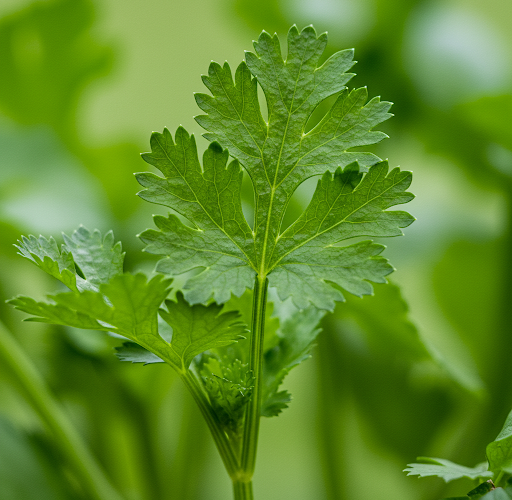How to Grow Coriander from Seeds: Quick to Harvest and Easy to Do
Coriander, also known as cilantro in some regions, is a popular herb used in various cuisines worldwide. Its fresh leaves and aromatic seeds make it a versatile plant to grow at home. The good news is that coriander is one of the easiest herbs to cultivate from seeds, and with the right care, you can enjoy a quick harvest. Whether you have a garden, a balcony, or just a windowsill, coriander can thrive with minimal effort.
This guide will walk you through the simple steps to grow coriander successfully from seeds, ensuring a bountiful harvest in no time.
Why Grow Coriander at Home?
Growing coriander at home comes with several benefits:
- Fresh Supply Anytime: Homegrown coriander tastes better than store-bought and is free from chemicals.
- Cost-Effective: A single pack of seeds can yield multiple harvests.
- Quick Growing: Coriander is ready to harvest in as little as 3-4 weeks.
- Minimal Space Needed: Perfect for containers, pots, or garden beds.
- Health Benefits: Rich in vitamins, antioxidants, and beneficial compounds.
By following the right techniques, you can grow coriander year-round, ensuring a steady supply for your kitchen.
Choosing the Right Coriander Seeds
Selecting quality seeds is crucial for a successful harvest. Here’s what to look for:
- Fresh, Organic Seeds: Avoid seeds that have been chemically treated.
- Whole Coriander Seeds: The best germination occurs with split seeds, so lightly crush whole seeds before planting.
- Suitable Variety: Some varieties, like ‘Santo’ or ‘Calypso,’ are slow-bolting and ideal for continuous harvesting.
If you have coriander seeds from your spice rack, they may still sprout, but germination rates will be lower.
Step-by-Step Guide to Growing Coriander from Seeds
1. Preparing the Seeds for Germination
- To improve germination, soak coriander seeds in lukewarm water for 12-24 hours.
- Lightly crush the seeds with a rolling pin to split them into halves.
- Drain the seeds and let them dry slightly before planting.
2. Choosing the Right Location
Coriander thrives best in cool, sunny conditions with some shade during extreme heat.
- Sunlight: Needs 4-6 hours of direct sunlight daily.
- Temperature: Ideal range is 15-25°C (59-77°F).
- Indoor Growing: Place near a south-facing window or use grow lights if needed.
3. Selecting the Right Container or Garden Space
Coriander can be grown in various setups:
- Pots & Containers: Use 6-8 inch deep pots with drainage holes.
- Garden Beds: Ensure loose, well-draining soil with organic compost.
- Hydroponic System: Coriander also grows well in hydroponic setups.
For continuous supply, plant coriander in small batches every 2-3 weeks.
4. Planting the Coriander Seeds
- Soil Preparation: Use well-draining, loamy soil enriched with compost.
- Sowing Depth: Plant seeds ¼ to ½ inch deep, covering lightly with soil.
- Spacing: Keep 2-3 inches between seeds to allow proper growth.
- Watering: Mist the soil gently to keep it moist but not soggy.
Seeds typically germinate within 7-10 days under optimal conditions.
Caring for Coriander Plants
1. Watering
- Keep the soil evenly moist but avoid overwatering.
- Water once a day in hot weather, less in cooler conditions.
- Use a watering can or spray bottle to prevent soil disturbance.
2. Fertilizing
- Use a mild liquid fertilizer every 2-3 weeks.
- Compost tea or fish emulsion can boost growth naturally.
- Avoid excessive nitrogen, as it encourages leaf growth but reduces flavor.
3. Providing Shade in Hot Climates
- In summer, provide partial shade to prevent bolting (going to seed too soon).
- Mulch around plants to keep the soil cool and retain moisture.
4. Pest and Disease Management
Coriander is relatively pest-resistant but watch out for:
- Aphids: Spray neem oil or a mild soap solution.
- Fungal Diseases: Ensure good air circulation and avoid overwatering.
- Slugs & Snails: Use crushed eggshells or diatomaceous earth around plants.
Harvesting Coriander
Coriander is ready to harvest in 3-4 weeks for leaves and 45-70 days for seeds.
1. Harvesting Coriander Leaves
- Cut the outer leaves 2 inches above the base with scissors.
- Harvest regularly to encourage new growth.
- For longer use, store leaves in an airtight container in the fridge.
2. Harvesting Coriander Seeds
- When plants bolt (flower and seed), let seeds turn brown.
- Cut the seed heads and hang them upside down to dry.
- Once dry, store seeds in a cool, dark place for replanting or cooking.
Tips for a Continuous Coriander Harvest
To enjoy coriander all year, follow these additional strategies:
- Succession Planting: Sow new seeds every 2-3 weeks.
- Choose Slow-Bolting Varieties: These will last longer before flowering.
- Harvest Frequently: Regular cutting encourages fresh growth.
- Grow Indoors in Winter: Keep coriander growing year-round with an indoor setup.
- Allow Some Plants to Flower: Collect seeds for future planting.
Common Problems and Solutions
| Problem | Cause | Solution |
|---|---|---|
| Leaves turning yellow | Overwatering or poor drainage | Reduce watering, ensure soil drains well. |
| Plants bolting too fast | Hot weather or stress | Provide shade, keep soil cool, and harvest leaves early. |
| Poor germination | Old seeds or improper conditions | Use fresh seeds, soak before planting, and maintain moisture. |
| Weak, leggy growth | Lack of sunlight | Place in full sun or use grow lights indoors. |
Final Thoughts
Growing coriander from seeds is a simple and rewarding process that anyone can do. With the right care, you can enjoy fresh leaves in just a few weeks and even harvest seeds for seasoning or replanting. Whether you grow it in pots, garden beds, or indoors, coriander is an essential herb that adds flavor and nutrition to your meals.
Try this method, and you’ll never have to buy coriander from the store again!



